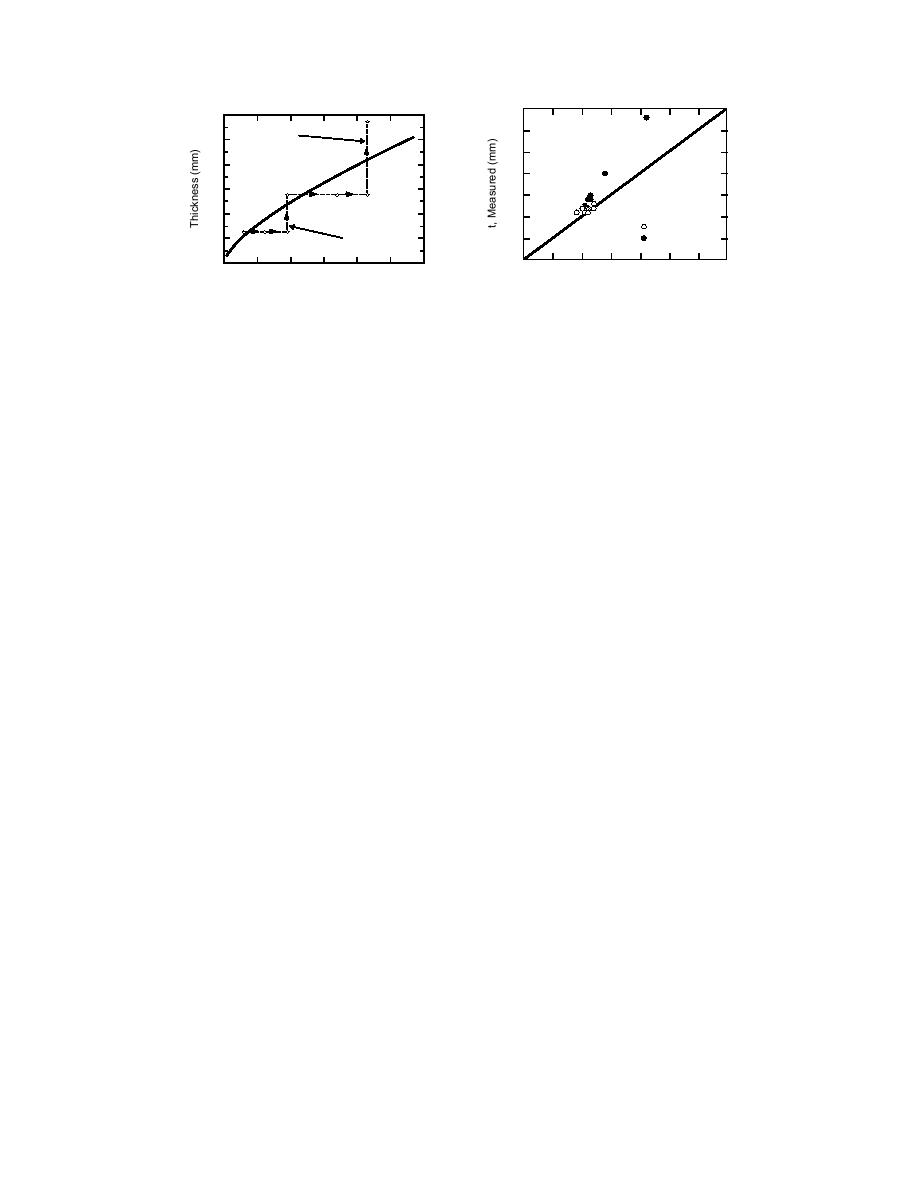
24
30
Complete
Cover Failure
16
20
8
10
Progressive
Progressive
Complete
Cover Failure
0
10
20
30
0
0.02
0.04
0.06
t, Predicted (mm)
Discharge (m3/s)
Figure 21. Change in jam thickness with
Figure 22. Measured vs. predicted jam
step increases in discharge. A progressive
thickness following progressive and com-
and a complete cover failure are shown.
plete jam failures.
Discussion
The laboratory experiments were conducted for two reasons: to obtain prelimi-
nary insights into the shoving and thickening process, and to examine the applica-
bility of equilibrium thickness theory for determining jam thickness in unsteady
water and ice flow situations. The degree of ice movement and its effects on the
water flow appeared to depend not only on the material properties of the particu-
late material composing the jam, but also on the initial discharge and subsequent
discharge increase. Two failure modes were identified: progressive and complete
jam failure. Progressive jam failure took place at lower initial discharge and lower
discharge increases relative to the discharge needed to completely destabilize the
jam. It can be characterized as the smooth movement of a shoving front that travels
downstream through the jam to the downstream end, causing minor consolidation
and thickening. On reaching the downstream screen, a thickening front moves back
upstream, resulting in a new, greater jam thickness able to withstand the higher
discharge rate. For progressive jam failures, the final jam thickness is very close to,
yet slightly greater than, the thickness predicted using equilibrium jam theory as
represented in eq 30.
Complete jam failure, on the other hand, occurred for initial discharges close to
the discharge necessary to completely destabilize the cover. It can be characterized
by the absence of (or instantaneous passage of) the shoving front. The entire jam is
moved downstream en masse, failing and thickening at the downstream screen.
The final thickness of jam is greater, sometimes significantly so, than the equilib-
rium thickness predicted using eq 30.
The experiments, particularly those producing complete jam failure, point to
the importance of ice momentum in determining the thickness resulting from the
arrest of a moving ice jam. The experiments also indicate that, especially for the
progressive jam failures, the time for a shoving and thickening event to occur can
be quite significant since the ice velocities are quite low. Shoving and thickening
are not instantaneous and should probably not be treated as such. While the pro-
gressive jam failure mode may not result in significantly greater ice thickness than
that predicted using equilibrium jam theory, there arise conditions of nonuniformity
of ice jam thickness, velocity, and depth that could significantly alter the very forces
that determine water and ice flow.
Additionally, the experiments reveal the important interactions of ice movement
and water flow on one another. They show, therefore, the necessity of using a fully
28



 Previous Page
Previous Page
